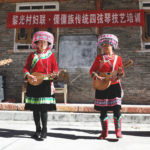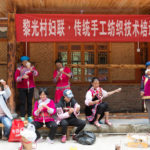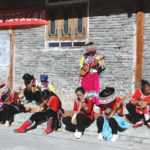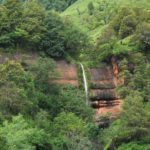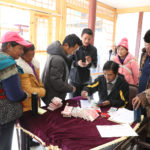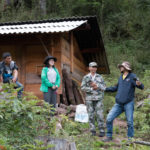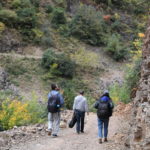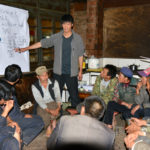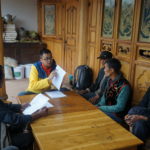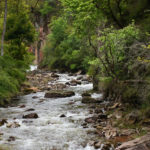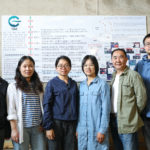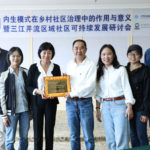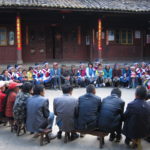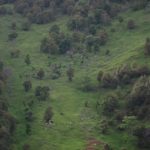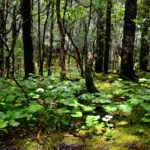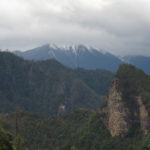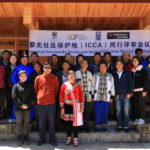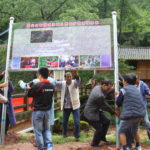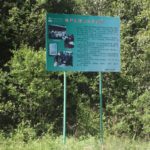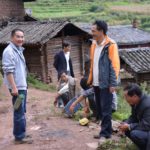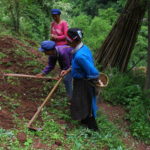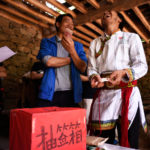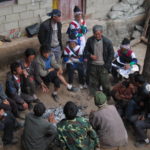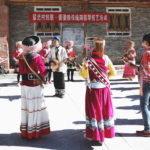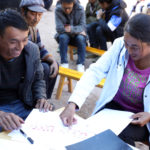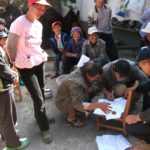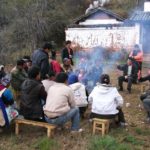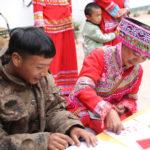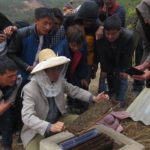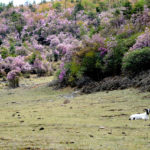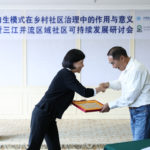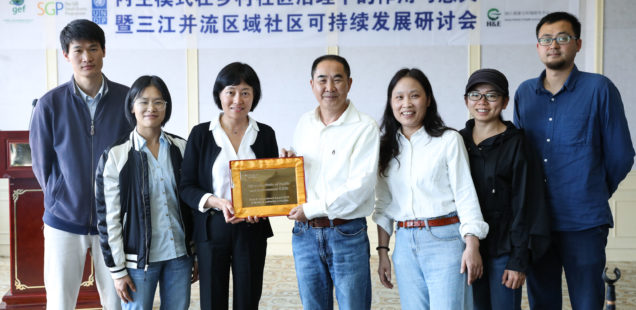
LIHE: assisting communities toward active self-governance in Yunnan (China)
For over ten years, Lijiang Institute of Health and Environment (LIHE) has dedicated itself to supporting self-governance and endogenous development for ethnic minority communities in Mt. Laojunshan area, within the Three Parallel Rivers World Heritage Site of Yunnan (China). Their experience demonstrates that a sound vision and work approach can succeed in empowering local communities. It also shows that empowered, self-governing communities can conserve their environment and improve their own livelihoods even in an overall unfavorable context, where top-down decision-making and the power of money appear dominant.
Within the exceptionally large Mt. Laojunshan area, LIHE is active in about 1000 square kilometers, serving 127 communities that comprise about 5000 people. In the last ten years, it has supported 49 such communities to establish their Community Conserved Areas— where their village codes and regulations need to be respected in a total of 18,308 hectares. LIHE’s approach has been to assist the communities to enhance their self-awareness and capacity for self-governance of communal resources. This has promoted a truly radical change: from a passive approach, relying on top-down administration, to active self-governance. Today, experienced communities sustainably manage the forests in which they live and the non-timber forest resources that they produce. They have also learned to deal with waste management, road construction, water diversions and other tasks crucial for the ecological, economic, cultural, and social aspects of their own ‘development’.
The entry point by which LIHE has enhanced community self-awareness, autonomy and development capacity has been the help it has provided to establish Community Mutual Funds, which follow five agreed principles. First, each household has an equal and fully voluntary opportunity to participate in the fund and borrow resources. Second, LIHE can support in co-financing initiatives, but the community’s resources need always to be the larger source of budget, to ensure its decisive voice. Third, only one third of households can get a loan in each lending cycle. Fourth, the community directly manages the loan: the households alternatively survey and manage, or receive, the loans. Fifth, each household who borrows resources must adhere to its obligations or pay a punishing compensation.
LIHE’s approach focuses on supporting community discussions and developing the regulations through democratic mechanisms. So far, 27 communities have established their Mutual Funds, serving 635 households. This has resulted in economic support for livelihood improvements but has also strengthened the ties among community members. The day of the annual repayment and re-issuing of loans has become a ritual festival for the communities, which effectively facilitates their internal cohesion and vitality, as well as collective learning, wisdom, and solidarity.
The community Mutual Fund is an excellent entry point. After agreeing together about the rules for the Mutual Fund, the members of the community can build upon their experience to revive their village code and regulation for the conservation of nature. The very fact of demonstrating that self-governance in managing financial resources is possible promotes the emergence of hidden capacities for self-governance in all other aspects of communal life… such as managing the natural commons. It also brings to collective awareness a variety of common concerns and ingenious ways to connect those in the life of the community. For instance, in 2010 the community of Xinfang decided to directly connect its Mutual Fund with the conservation of nature. All households decided to forbid tree cutting in the forest and agreed that any violator will be ‘taken out’ of the Mutual Fund. This was the first village code that clearly included regulations for nature conservation in Lijiang City, Yunnan!
Today, 49 communities have voluntarily established their Community Conserved Areas by forming their village codes and regulations. The community self-governance of the conserved forests avoids their over exploitation, while the self-governing capacity progressively gets applied to solve or alleviate other problems, such as water shortage, soil erosion, or the risk of landslides. Endangered native fish species have been recovered and are now bred in a river subjected to conservation rules. Through their Community Conserved Areas, villagers have achieved “benefit from conservation and conservation for benefits”, while grounding and strengthening their community’s solidarity.
In parallel with the above, LIHE has also supported communities to revitalize their traditions and culture. For example, community seniors have been encouraged to teach the youth about the knowledge and skills of traditional spinning and weaving, as well as traditional music, singing and dancing. And communities have been supported to explore, and are now improving, new options for sustainable livelihoods. Examples are farming traditional crops and herbal medicines and keeping bees for honey, which can replace ecologically-negative farming for tobacco. The fundamental kernel of LIHE’s work has been respecting the self-determination of communities— their wisdom, traditional knowledge, and inspiring endogenous power for self- development. It is only based on that that more harmonious relations between humans and nature have also been promoted.
There is no doubt that community self-governance and collective management of the natural commons face enormous challenges because of ‘modernization’. Yet, the approach of strengthening community self-awareness, promoting the emergence of self-governance, and re-kindling local cultural values and principles has proven up to such challenges. LIHE’s work is an inspiring, driving force for community’s solidarity and collective action—a model for many others to follow.
Download The Peer Review Report for the Liguang Community Conserved Area (CCA) – PDF, English

